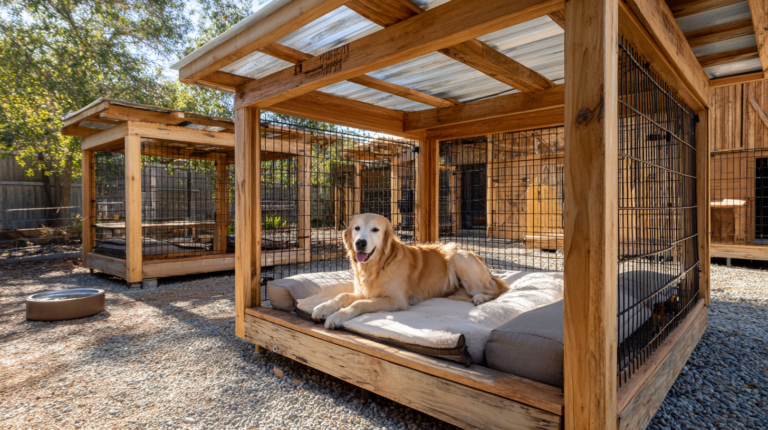Discover effective solutions for common cat behavior problems using positive training methods. Expert tips to transform your feline’s challenging behaviors into healthy habits.
Table of Contents
Every cat owner has faced those moments of frustration when their beloved feline companion exhibits puzzling or problematic behaviors. Whether it’s scratching your favorite sofa, refusing to use the litter box, or displaying aggressive tendencies, cat behavior problems can strain the bond between you and your pet. However, the good news is that most feline behavioral issues can be effectively addressed through positive training techniques that strengthen your relationship while creating a harmonious home environment.
Understanding your cat’s behavior is the foundation of successful pet ownership. Unlike dogs, cats communicate differently and respond to various motivational factors. Research from the American Association of Feline Practitioners shows that 70% of behavioral problems in cats stem from environmental stressors, medical issues, or inadequate mental stimulation. By implementing positive reinforcement strategies, you can transform challenging behaviors into opportunities for deeper connection and mutual understanding.
This comprehensive guide will explore five of the most common cat behavior problems and provide you with proven, positive training solutions that respect your cat’s natural instincts while promoting desirable behaviors. From inappropriate elimination to excessive vocalization, we’ll cover practical strategies that have helped thousands of cat owners create peaceful, loving homes with their feline companions.
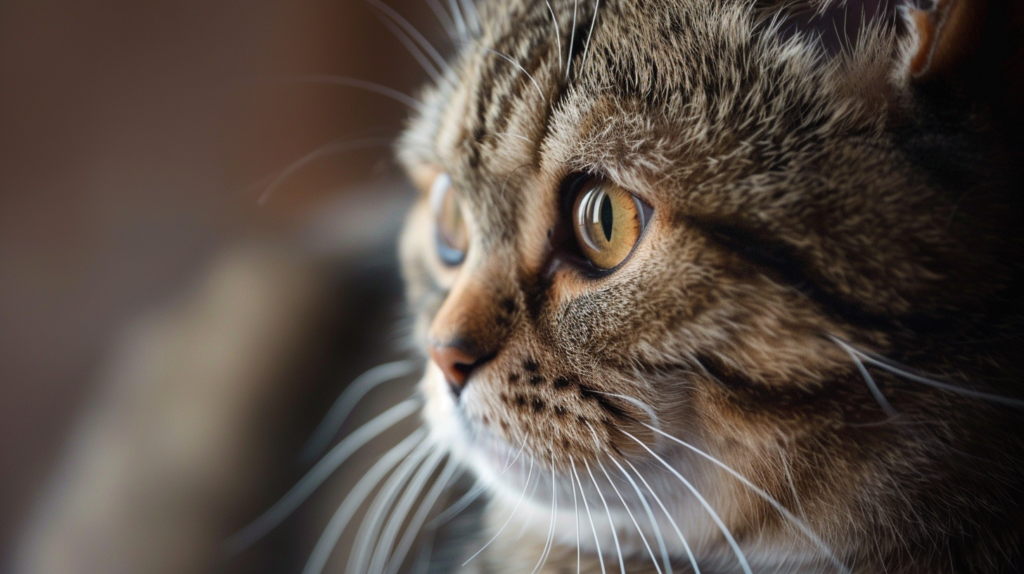
Understanding the Root Causes of Cat Behavior Problems
Before diving into specific solutions, it’s crucial to understand why cats develop behavioral issues. According to veterinary behaviorist Dr. Sarah Ellis from the University of Lincoln, most cat behavior problems fall into three categories: medical, environmental, and social factors.
Medical factors account for approximately 30% of behavioral changes in cats. Conditions such as urinary tract infections, arthritis, dental pain, or cognitive dysfunction can manifest as seemingly behavioral problems. For instance, a cat avoiding the litter box might be experiencing pain while urinating, rather than displaying defiance.
Environmental stressors represent the largest category, affecting nearly 40% of cases. These include changes in household routine, new pets or family members, relocation, inadequate resources, or lack of appropriate outlets for natural behaviors. Cats are creatures of habit, and even minor environmental changes can trigger stress responses.
Social factors encompass the remaining 30% of behavioral issues. Multi-cat households often experience territory disputes, resource competition, or incompatible personality matches. Additionally, insufficient human-cat interaction or inappropriate play can lead to behavioral problems.
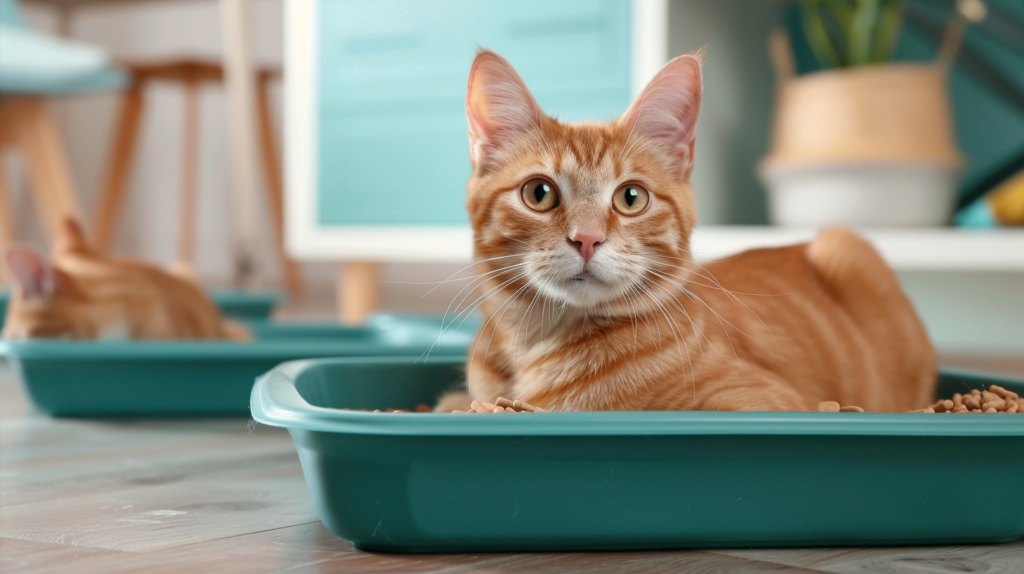
Problem #1: Inappropriate Elimination Outside the Litter Box
Understanding the Issue
Inappropriate elimination is the most common reason cats are surrendered to shelters, affecting approximately 1 in 10 cats according to the ASPCA. This behavior can manifest as urinating or defecating outside the litter box, often on carpets, beds, or other soft surfaces.
Root Causes
The underlying causes typically include:
- Medical conditions (urinary tract infections, kidney disease, arthritis)
- Litter box aversion (dirty box, wrong litter type, inadequate privacy)
- Territorial marking (especially in multi-cat households)
- Stress or anxiety from environmental changes
- Box location issues (too noisy, hard to access, near food/water)
Positive Training Solutions
Step 1: Rule Out Medical Issues Schedule a veterinary examination to eliminate underlying health problems. Dr. Melissa Bain from UC Davis School of Veterinary Medicine emphasizes that medical evaluation should always be the first step when addressing elimination issues.
Step 2: Optimize Litter Box Setup
- Provide one litter box per cat plus one additional box
- Use unscented, clumping litter (preferred by 65% of cats in Cornell University studies)
- Place boxes in quiet, easily accessible locations
- Clean boxes daily and perform deep cleaning weekly
- Ensure boxes are large enough (1.5 times your cat’s body length)
Step 3: Create Positive Associations
- Place high-value treats near (not in) the litter box
- Reward your cat with treats and praise immediately after proper litter box use
- Use enzymatic cleaners to eliminate odors from accident sites
- Temporarily restrict access to preferred inappropriate elimination sites
Step 4: Address Stress Factors
- Maintain consistent daily routines
- Provide vertical spaces and hiding spots
- Use Feliway diffusers to reduce environmental stress
- Gradually introduce any household changes
Success Timeline
Most cats respond to these interventions within 2-4 weeks when consistently applied. A case study from the Journal of Feline Medicine and Surgery documented a 85% success rate when combining medical treatment with environmental modifications and positive reinforcement techniques.
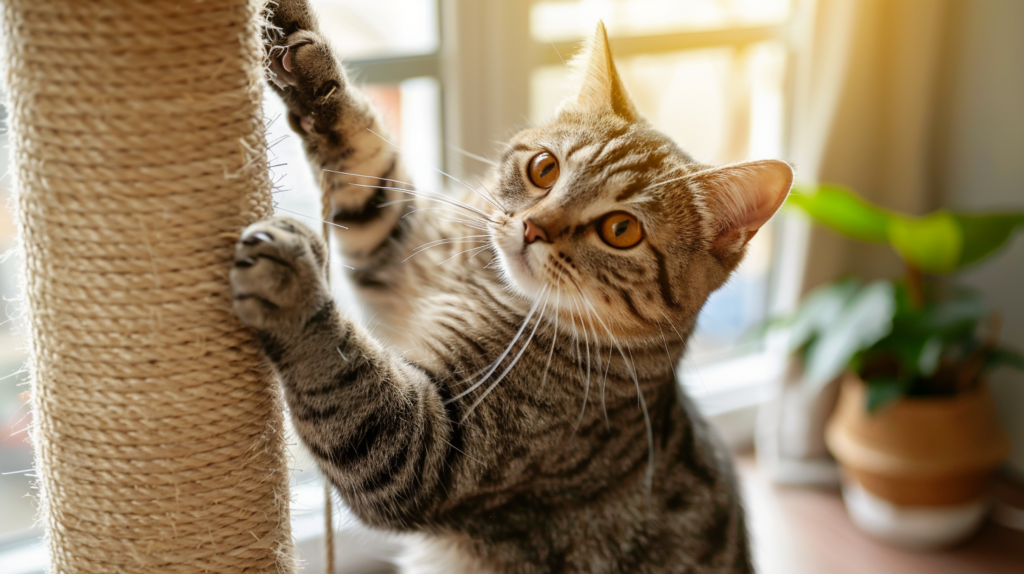
Problem #2: Destructive Scratching of Furniture and Belongings
Understanding the Issue
Scratching is a natural and essential behavior for cats, serving multiple purposes including claw maintenance, territory marking, and stress relief. However, when cats target furniture, carpets, or personal belongings, this normal behavior becomes problematic for owners.
Root Causes
Inappropriate scratching locations typically result from:
- Inadequate or inappropriate scratching posts
- Stress-induced increased scratching frequency
- Territory marking in multi-cat households
- Lack of environmental enrichment
- Previous positive associations with furniture textures
Positive Training Solutions
Step 1: Provide Appropriate Scratching Alternatives Research from the University of California shows that cats prefer scratching posts that are:
- Tall enough for full-body stretching (minimum 32 inches)
- Sturdy and won’t wobble during use
- Made from sisal rope or corrugated cardboard
- Positioned vertically and horizontally to match preferences
Step 2: Strategic Placement
- Position scratching posts near sleeping areas (cats often scratch upon waking)
- Place posts near previously targeted furniture
- Ensure posts are easily accessible and visible
- Provide multiple options throughout the home
Step 3: Make Furniture Less Appealing
- Temporarily cover furniture with plastic sheeting or aluminum foil
- Use citrus-scented deterrent sprays (test in inconspicuous areas first)
- Trim your cat’s claws regularly to minimize damage
- Consider nail caps as a temporary solution during training
Step 4: Positive Reinforcement Training
- Reward scratching post use with treats, praise, or play
- Use interactive toys near scratching posts to create positive associations
- Never punish inappropriate scratching, as this increases stress
- Redirect inappropriate scratching by gently moving your cat to the appropriate post
Advanced Techniques
Clicker Training for Scratching Behavior:
- Introduce the clicker by pairing the sound with treats
- Click and reward when your cat approaches the scratching post
- Gradually shape the behavior by rewarding closer approximations to desired scratching
- Eventually click and reward only when your cat actually uses the post
Success Metrics
A study published in Applied Animal Behaviour Science found that 92% of cats successfully redirected their scratching behavior when provided with appropriate alternatives and positive reinforcement training within 3-6 weeks.
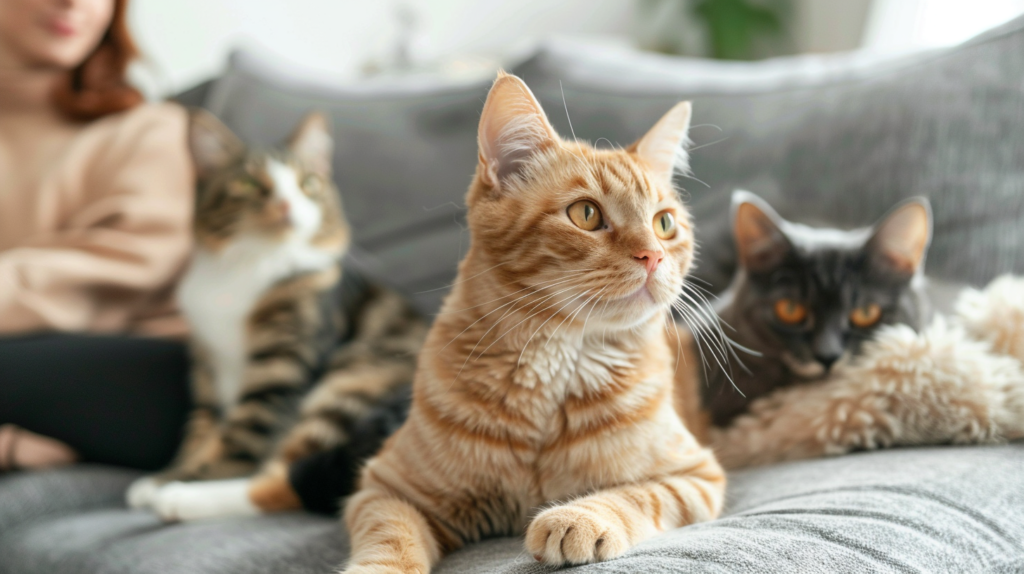
Problem #3: Aggressive Behavior Toward Humans or Other Pets
Understanding the Issue
Feline aggression can manifest in various forms, including biting, scratching, hissing, or stalking behaviors. This complex issue affects both indoor and outdoor cats and can pose safety risks to family members and other pets.
Types of Aggressive Behavior
Fear-based aggression occurs when cats feel threatened or cornered, often resulting from inadequate socialization or traumatic experiences.
Territorial aggression involves defending resources or spaces, particularly common in multi-cat households or when introducing new pets.
Play aggression typically affects young cats who haven’t learned appropriate play boundaries, often manifesting as ambush attacks on human ankles or hands.
Redirected aggression happens when a cat becomes aroused by one stimulus but attacks a different target, such as seeing an outdoor cat through a window and then attacking a housemate.
Positive Training Solutions
Step 1: Identify Triggers and Warning Signs
- Document when and where aggressive incidents occur
- Note environmental factors (sounds, visitors, other pets)
- Learn to recognize early warning signals (dilated pupils, flattened ears, tail twitching)
- Maintain a behavior log to identify patterns
Step 2: Environmental Management
- Remove or minimize identified triggers when possible
- Provide escape routes and safe spaces for your cat
- Use baby gates to create visual barriers in multi-pet households
- Ensure adequate resources (food, water, litter boxes, resting areas) to prevent competition
Step 3: Counter-Conditioning and Desensitization This technique involves gradually exposing your cat to triggers at low intensities while pairing the experience with positive outcomes:
- Identify the threshold – the distance or intensity at which your cat begins to show stress
- Work below threshold – expose your cat to the trigger at a level that doesn’t provoke aggression
- Pair with positive experiences – offer high-value treats, play, or affection during exposure
- Gradually increase intensity – slowly decrease distance or increase trigger intensity over multiple sessions
Step 4: Appropriate Play and Exercise
- Engage in interactive play sessions twice daily using wand toys
- Allow your cat to “catch” the toy to satisfy hunting instincts
- Avoid using hands or feet as play objects
- Provide puzzle feeders to stimulate mental engagement
- Ensure adequate physical exercise to reduce pent-up energy
Case Study: Successful Aggression Modification
Behaviorist Dr. John Bradshaw documented a case involving a 3-year-old male cat showing territorial aggression toward a new kitten. The treatment protocol included:
- Separating the cats and reintroducing them gradually over 6 weeks
- Feeding both cats on opposite sides of a closed door, gradually moving bowls closer
- Using positive reinforcement when the cats remained calm in each other’s presence
- Providing additional resources to prevent competition
The intervention achieved a 90% reduction in aggressive incidents within 8 weeks, with both cats eventually coexisting peacefully.
Safety Considerations
Never attempt to break up a cat fight with your hands. Instead, use distraction techniques such as:
- Loud clapping or noise makers
- Throwing a soft object (never at the cat)
- Creating visual barriers with blankets or cardboard
- Using water spray bottles from a distance
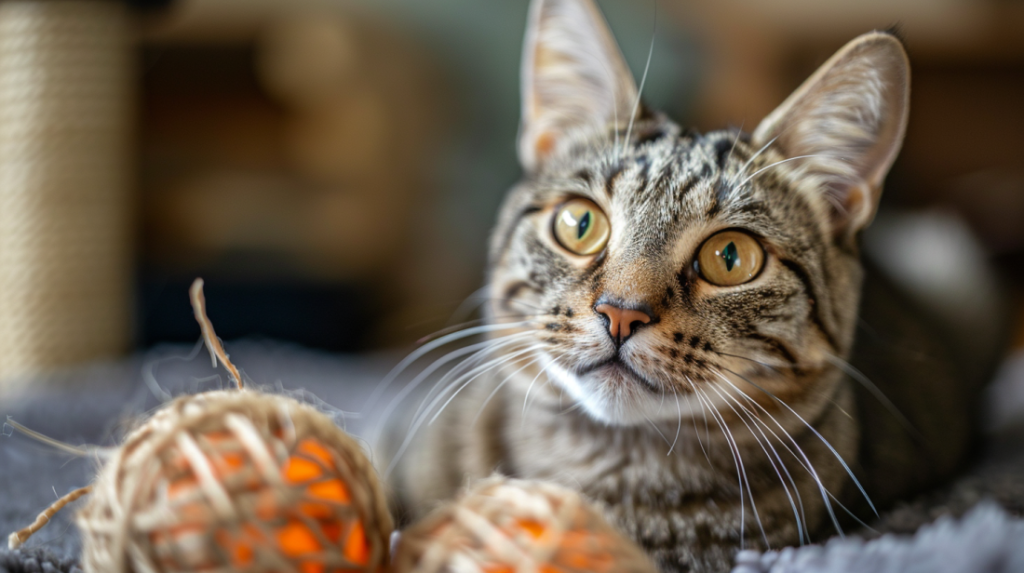
Problem #4: Excessive Vocalization and Attention-Seeking Behavior
Understanding the Issue
While some vocalization is normal feline communication, excessive meowing, yowling, or demanding behavior can disrupt household peace and may indicate underlying issues. This behavior is particularly common in senior cats and certain breeds like Siamese and Oriental cats.
Root Causes
Excessive vocalization often stems from:
- Medical conditions (hyperthyroidism, cognitive dysfunction, hearing loss)
- Attention-seeking behavior that has been inadvertently reinforced
- Anxiety or stress from environmental changes
- Boredom and inadequate mental stimulation
- Changes in routine or social dynamics
- Hunger or requests for specific resources
Positive Training Solutions
Step 1: Medical Evaluation Senior cats showing increased vocalization should receive thorough veterinary examinations. Hyperthyroidism affects 10% of cats over age 10 and commonly causes excessive vocalizations along with other symptoms.
Step 2: Identify Communication Patterns
- Document when excessive vocalization occurs
- Note what typically follows the behavior (attention, food, door opening)
- Distinguish between different types of vocalizations and their meanings
- Track whether certain environmental factors trigger increased vocalization
Step 3: Modify Response Patterns The key principle: Only respond to appropriate, quiet behavior while ignoring excessive vocalization.
- Wait for quiet moments before providing attention, food, or access to desired areas
- Turn away or leave the room when your cat vocalizes excessively for attention
- Immediately reward calm, quiet behavior with attention, treats, or play
- Be consistent – any family member responding to excessive vocalization can reinforce the behavior
Step 4: Proactive Engagement
- Schedule regular play sessions to prevent attention-seeking behavior
- Provide interactive puzzle toys and environmental enrichment
- Establish consistent feeding times to reduce food-related vocalizations
- Create predictable routines that meet your cat’s needs before they vocalize
Advanced Training Techniques
Teaching a “Quiet” Command:
- Wait for a natural pause in your cat’s vocalization
- Immediately say “quiet” and reward with treats or attention
- Gradually extend the quiet period before rewarding
- Practice during calm moments to strengthen the association
Alternative Communication Training:
- Teach your cat to use a bell or touch a target instead of vocalizing
- Reward alternative communication methods consistently
- Gradually phase out responses to excessive vocalization while maintaining responses to appropriate communication
Success Timeline and Expectations
Behavioral modification for excessive vocalization typically requires 4-8 weeks of consistent application. A study from the International Association of Animal Behavior Consultants found that 78% of cats showed significant improvement when families consistently applied these techniques.
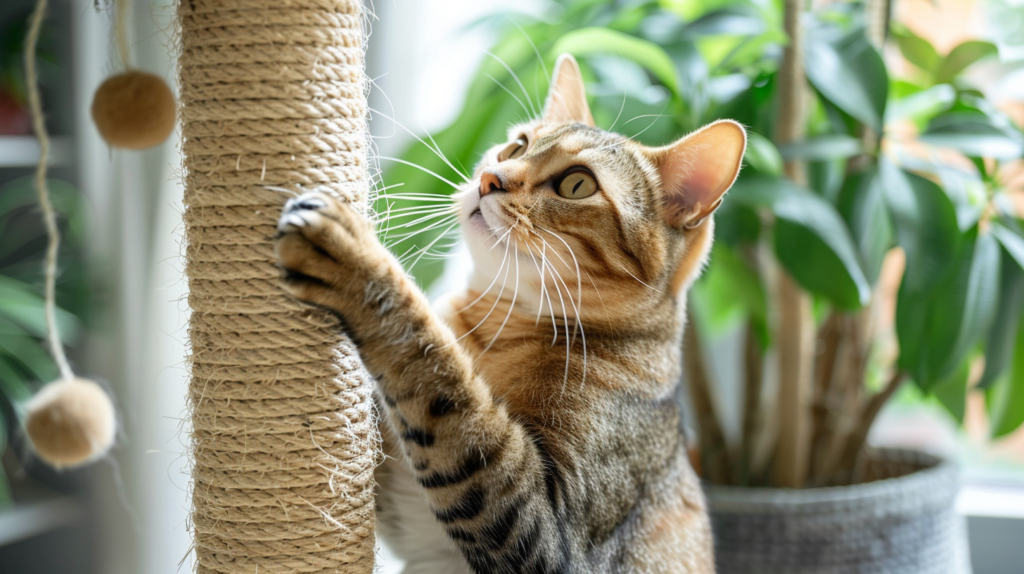
Problem #5: Refusing to Use Scratching Posts or Designated Areas
Understanding the Issue
Many cat owners invest in scratching posts only to find their cats continue targeting furniture while ignoring the provided alternatives. This preference for inappropriate surfaces often results from poor post selection, placement issues, or insufficient training.
Root Causes
Cats may reject scratching posts due to:
- Size and stability issues – wobbly or too-small posts don’t allow for proper stretching
- Material preferences – cats have individual texture preferences that may not match available posts
- Location problems – posts placed in low-traffic or inconvenient areas are often ignored
- Previous negative associations – punishment near scratching posts can create avoidance
- Insufficient variety – offering only one type of scratching surface limits options
- Competition in multi-cat households – dominant cats may monopolize preferred scratching areas
Positive Training Solutions
Step 1: Analyze Current Scratching Preferences Observe your cat’s existing scratching behavior to understand preferences:
- Vertical vs. horizontal scratching – does your cat stretch up on furniture or scratch carpets?
- Texture preferences – what materials does your cat currently target?
- Location patterns – where does inappropriate scratching most commonly occur?
- Time patterns – when during the day does scratching behavior increase?
Step 2: Strategic Post Selection and Placement
Based on research from the UC Davis School of Veterinary Medicine, effective scratching posts should meet these criteria:
| Feature | Specification | Reasoning |
| Height | Minimum 32 inches | Allows full-body stretching |
| Stability | No wobbling when used | Cats avoid unstable surfaces |
| Material | Sisal rope or corrugated cardboard | Preferred by 70% of cats in studies |
| Orientation | Both vertical and horizontal options | Individual preferences vary |
| Location | Near sleeping areas and targeted furniture | Cats often scratch after waking |
Step 3: Introduction and Training Protocol
Week 1: Introduction Phase
- Place new scratching posts near existing problem areas
- Sprinkle catnip or silvervine on posts to increase interest
- Avoid forcing your cat to interact with posts
- Reward any investigation or sniffing with treats
Week 2: Active Encouragement
- Use interactive toys near scratching posts to create positive associations
- Gently guide your cat’s paws in scratching motions (only if cat is comfortable)
- Reward actual scratching behavior immediately with high-value treats
- Continue protecting furniture with temporary coverings
Week 3-4: Reinforcement and Expansion
- Gradually move posts to permanent locations
- Add additional posts in strategic locations
- Phase out furniture protection as appropriate post use increases
- Maintain consistent rewards for proper scratching behavior
Environmental Enrichment Integration
Combine scratching post training with broader environmental enrichment:
- Vertical territory – place posts at different heights to maximize vertical space usage
- Activity centers – integrate posts with climbing trees or play structures
- Resource distribution – ensure scratching options are available throughout the home
- Multi-sensory appeal – combine visual, tactile, and scent elements around scratching areas
Troubleshooting Common Issues
Post Rejection Solutions:
- Try different materials (cardboard, carpet, wood, sisal)
- Experiment with horizontal vs. vertical orientations
- Move posts to higher-traffic areas
- Add multiple posts to increase options
- Consider posts with different base styles (wide base vs. tall tree-style)
Competition in Multi-Cat Households:
- Provide multiple scratching options in different areas
- Ensure each cat has access to preferred scratching locations
- Monitor for resource guarding behaviors
- Consider individual preferences when selecting post varieties
Creating a Comprehensive Positive Training Environment
The Foundation of Success
Successful behavior modification relies on creating an environment that supports natural feline behaviors while redirecting problematic actions. This comprehensive approach addresses both immediate behavior concerns and long-term behavioral health.
Essential Environmental Elements
Resource Accessibility Ensure your cat has easy access to all necessary resources:
- Fresh water available in multiple locations
- High-quality food provided on a consistent schedule
- Clean litter boxes (one per cat plus one additional)
- Comfortable resting areas at various heights
- Appropriate scratching surfaces in multiple locations
Mental Stimulation and Enrichment Boredom contributes to many behavioral problems. Provide:
- Puzzle feeders and food-dispensing toys
- Interactive toys that mimic prey behavior
- Rotating toy selection to maintain novelty
- Window perches for environmental observation
- Vertical climbing opportunities
Stress Reduction Strategies Minimize environmental stressors through:
- Consistent daily routines
- Gradual introduction of changes
- Adequate hiding spots and safe spaces
- Pheromone diffusers during stressful periods
- Separation of resources in multi-cat households
The Role of Consistency in Training
Research from animal behavior specialists at Cornell University emphasizes that consistency across all family members is crucial for successful behavior modification. When household members respond differently to the same behavior, cats receive mixed signals that can slow or prevent progress.
Family Training Protocol:
- Education phase – ensure all family members understand the training approach
- Agreement on responses – establish consistent reactions to both desired and undesired behaviors
- Regular check-ins – weekly family meetings to discuss progress and maintain consistency
- Documentation – maintain shared behavior logs to track progress and identify patterns
Professional Support When Needed
While many behavior problems can be successfully addressed through positive training techniques, some situations require professional intervention. Consider consulting a certified cat behavior consultant or veterinary behaviorist when:
- Aggressive behavior poses safety risks
- Multiple interventions have been unsuccessful after 8-12 weeks
- Behavioral changes occur suddenly or are accompanied by physical symptoms
- Multi-cat household dynamics are complex and unresolved
- Stress-related behaviors are severe or persistent
The International Association of Animal Behavior Consultants provides directories of certified professionals who specialize in feline behavior modification.
Measuring Success and Maintaining Progress
Establishing Baseline Measurements
Before implementing behavior modification strategies, establish clear baseline measurements:
- Frequency – how often does the problem behavior occur daily?
- Duration – how long do episodes typically last?
- Intensity – rate the severity of the behavior on a scale of 1-10
- Triggers – document environmental factors that precede the behavior
- Impact – assess how the behavior affects household dynamics
Progress Tracking Methods
Daily Behavior Log Maintain detailed records including:
- Date and time of behavioral incidents
- Environmental context and potential triggers
- Response methods used
- Cat’s reaction to interventions
- Overall household stress levels
Photo and Video Documentation Visual records can reveal patterns not apparent in written logs and provide valuable information for veterinary or behavioral consultations.
Weekly Progress Reviews Schedule regular assessments to:
- Compare current behavior frequency to baseline measurements
- Identify successful intervention strategies
- Adjust approaches based on observed results
- Celebrate positive changes and milestones
Long-term Maintenance Strategies
Continued Environmental Enrichment Maintain the environmental improvements that supported initial behavior change:
- Regular rotation of toys and activities
- Consistent resource availability
- Ongoing stress reduction measures
- Periodic evaluation of environmental needs
Reinforcement Schedule Adjustment As behaviors improve, gradually shift from continuous reinforcement to intermittent reinforcement:
- Continue rewarding desired behaviors, but less frequently
- Focus rewards on particularly challenging situations
- Maintain some level of positive reinforcement indefinitely
- Monitor for regression and increase reinforcement if needed
Advanced Behavioral Considerations
Understanding Individual Personality Factors
Each cat’s personality influences their response to training and environmental modifications. Research from the University of Edinburgh identifies five major personality dimensions in cats that affect behavior modification success:
Neuroticism – cats high in this trait may require more gradual exposure to changes and additional stress reduction measures.
Extraversion – outgoing cats often respond well to interactive training methods and social rewards.
Dominance – cats with strong dominance traits may need more structured training approaches and clear boundaries.
Impulsiveness – impulsive cats benefit from increased environmental enrichment and more frequent training sessions.
Agreeableness – cats scoring high in agreeableness typically respond quickly to positive reinforcement techniques.
Age-Related Training Considerations
Kitten Behavior Modification (Under 1 Year)
- Shorter attention spans require brief, frequent training sessions
- Play-based learning is most effective
- Socialization opportunities should be maximized
- Prevention strategies are often more successful than correction
Adult Cat Training (1-7 Years)
- Established behavior patterns may require longer modification periods
- Consistency and patience are crucial for success
- Environmental enrichment becomes increasingly important
- Multi-modal approaches (environmental + training + medical) are most effective
Senior Cat Considerations (7+ Years)
- Medical evaluation becomes more critical as health issues increase
- Cognitive changes may affect learning ability
- Comfort and accessibility modifications may be necessary
- Gentle, low-stress approaches are essential
Multi-Cat Household Dynamics
Managing behavior problems in households with multiple cats requires understanding social dynamics and resource competition. The International Cat Care organization provides specific guidelines for multi-cat behavior modification:
Social Hierarchy Assessment
- Identify dominant and submissive cats in the household
- Observe resource guarding behaviors
- Note which cats avoid certain areas or resources
- Document inter-cat relationships and conflicts
Resource Distribution Strategies
- Provide multiple resources in different locations
- Ensure each cat has access to preferred areas
- Create separate feeding stations to reduce competition
- Maintain adequate litter box numbers and placement
Gradual Reintroduction Protocols When serious conflicts arise, temporary separation followed by gradual reintroduction may be necessary:
- Complete separation in different areas of the home
- Scent swapping using towels and bedding
- Visual contact through baby gates or screen doors
- Supervised interactions during positive activities like feeding
- Gradual increase in interaction time and freedom
For more expert pet care tips and product recommendations, visit BlithePet.com — your trusted source for pet wellness.
Frequently Asked Questions
How long does it typically take to see improvement in cat behavior problems?
Most cat behavior problems show initial improvement within 2-4 weeks of consistent positive training implementation. However, complete behavior modification can take 6-12 weeks depending on the problem’s severity, the cat’s age and personality, and household consistency. Scratching behavior typically redirects within 3-6 weeks, while complex issues like aggression or multi-cat conflicts may require 8-16 weeks of dedicated training. The key is maintaining consistency and patience throughout the process.
Can older cats learn new behaviors, or is it too late to change established patterns?
Cats of all ages can learn new behaviors, though the process may take longer with senior cats due to established habits and potential cognitive changes. A study from the Journal of Veterinary Behavior found that cats over 7 years old successfully modified behaviors in 73% of cases when provided with appropriate training and environmental modifications. The key is using gentler approaches, allowing more time for adaptation, and ensuring any underlying medical issues are addressed first.
What should I do if positive training techniques aren’t working after several weeks?
If you don’t see improvement after 6-8 weeks of consistent positive training, consider these steps: First, schedule a veterinary examination to rule out medical causes. Second, evaluate your consistency – ensure all household members are following the same protocols. Third, consider consulting a certified cat behavior consultant who can assess your specific situation and provide customized strategies. Sometimes minor adjustments to technique or environment can make significant differences in success rates.
Is it normal for behavior problems to temporarily worsen when starting training?
Yes, this phenomenon called an “extinction burst” is completely normal and actually indicates that your training is working. When you stop responding to unwanted behaviors (like excessive meowing for attention), cats often initially increase the intensity or frequency of the behavior before it decreases. This temporary worsening typically lasts 3-7 days. Consistency during this period is crucial – giving in to the increased behavior will actually strengthen it and make future training more difficult.
How can I prevent behavior problems from developing in a new cat or kitten?
Prevention is always easier than correction. Establish proper resources from day one: appropriate scratching posts, adequate litter boxes, and consistent routines. Provide plenty of environmental enrichment including interactive toys, climbing opportunities, and mental stimulation. Begin positive reinforcement training early, rewarding desired behaviors before problems develop. Ensure proper socialization and gradual introduction to household changes. Regular veterinary care helps catch potential medical issues before they manifest as behavioral problems.
Should I ever use punishment or negative reinforcement with cats?
No, punishment and negative reinforcement are not recommended for cats and often worsen behavioral problems. Cats don’t understand punishment the way dogs might, and negative experiences typically increase stress and anxiety, potentially creating new behavioral issues. Research consistently shows that positive reinforcement techniques are more effective, create stronger human-cat bonds, and result in longer-lasting behavioral changes. Focus on rewarding desired behaviors and managing the environment to prevent unwanted behaviors rather than punishing them.
Conclusion
Successfully addressing cat behavior problems requires patience, consistency, and a deep understanding of feline psychology and natural behaviors. The five common issues we’ve explored – inappropriate elimination, destructive scratching, aggression, excessive vocalization, and scratching post avoidance – can all be effectively managed through positive training techniques that respect your cat’s instincts while promoting harmonious household relationships.
Remember that behavior modification is a gradual process that requires commitment from all family members. Environmental enrichment, consistent training protocols, and addressing underlying medical or stress factors form the foundation of successful behavior change. While some improvements may be visible within days, lasting behavioral transformation typically occurs over weeks or months of dedicated effort.
The key to long-term success lies in understanding that behavior problems often serve important functions for cats – whether expressing stress, marking territory, or seeking attention. By providing appropriate outlets for these natural needs while redirecting problematic behaviors, you create an environment where both you and your cat can thrive.
If you encounter persistent challenges or complex behavioral issues, don’t hesitate to seek professional help from certified cat behavior consultants or veterinary behaviorists. Every cat is unique, and customized approaches may be necessary for optimal results.
Have a similar experience with your pet? Share it in the comments below!





